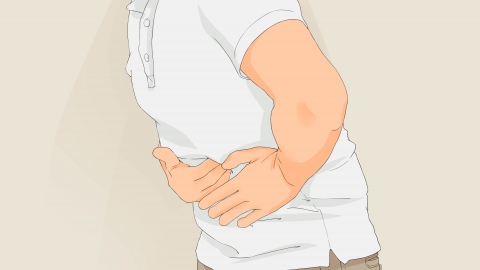Why does my lower abdomen hurt when walking?
Abdominal pain during walking may be caused by exercising immediately after meals, excessive exercise intensity, cold exposure to the abdomen, intestinal spasms, or chronic enteritis. Adjustments such as changing exercise timing, reducing exercise intensity, keeping the abdomen warm, and medication can help alleviate symptoms. If the pain persists or worsens, or is accompanied by diarrhea, vomiting, or other symptoms, prompt medical attention is necessary.
1. Exercising immediately after eating: After a meal, the gastrointestinal tract is in a state of digestion. Walking right away can pull on the digestive organs and cause abdominal pain, typically occurring in episodic waves. It is recommended to rest for 1–2 hours after eating before engaging in activities like walking. Start at a slower pace and avoid vigorous activity initially.
2. Excessive exercise intensity: Walking too fast or over long distances may lead to abdominal muscle fatigue or disrupted breathing rhythm, causing abdominal pain along with muscle soreness. It is advised to reduce exercise intensity according to individual capacity, shorten walking distance, maintain steady breathing during exercise, and avoid breath-holding.

3. Cold abdomen: Inadequate abdominal warmth during walking exposes the area to cold air, which can irritate the gastrointestinal mucosa and trigger gastrointestinal spasms, leading to abdominal pain—often localized around the navel or lower abdomen. Wear belly-covering clothing when walking to prevent abdominal exposure to cold. Applying a warm compress to the abdomen may help relieve discomfort when pain occurs.
4. Intestinal spasm: Improper diet or cold exposure can stimulate intestinal smooth muscles, causing spasmodic contractions. Physical activity like walking increases intestinal motility, exacerbating the pain, which typically presents as paroxysmal cramping. Under medical guidance, medications such as pinaverium bromide tablets, dl-hyoscycamine sulfate tablets, or simethicone emulsion may be used to relieve symptoms.
5. Chronic enteritis: Long-term inflammation of the intestinal mucosa can cause abdominal pain during walking due to increased intestinal motility pulling on inflamed areas. This is often accompanied by diarrhea and abnormal stool characteristics. Follow medical advice to use medications such as Bifidobacterium triple viable capsules, montmorillonite powder, or cefixime dispersible tablets to manage symptoms.
Daily care should include maintaining regular eating habits and avoiding overeating, performing proper warm-up exercises before physical activity, ensuring adequate abdominal warmth, wearing comfortable footwear while walking, and promptly adjusting exercise routines if discomfort occurs.




